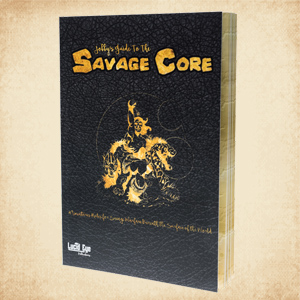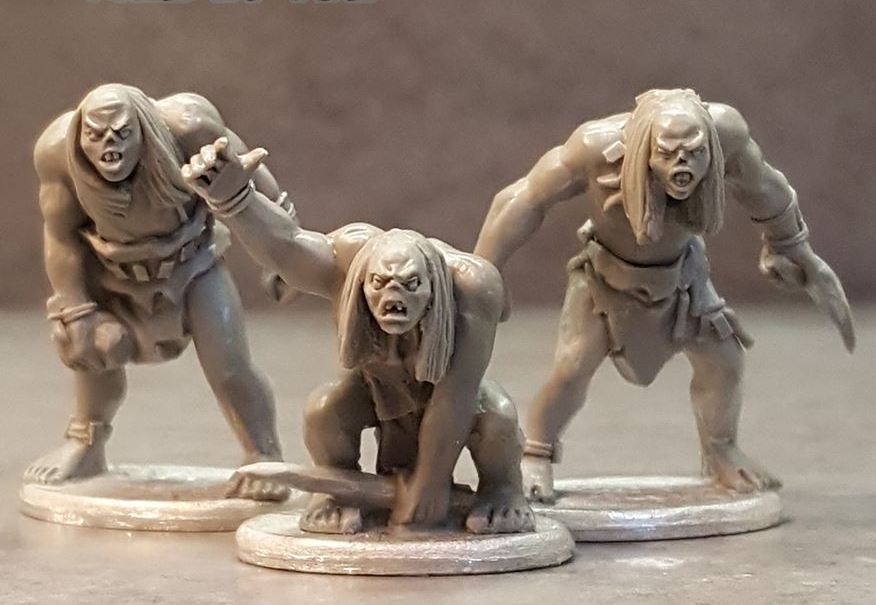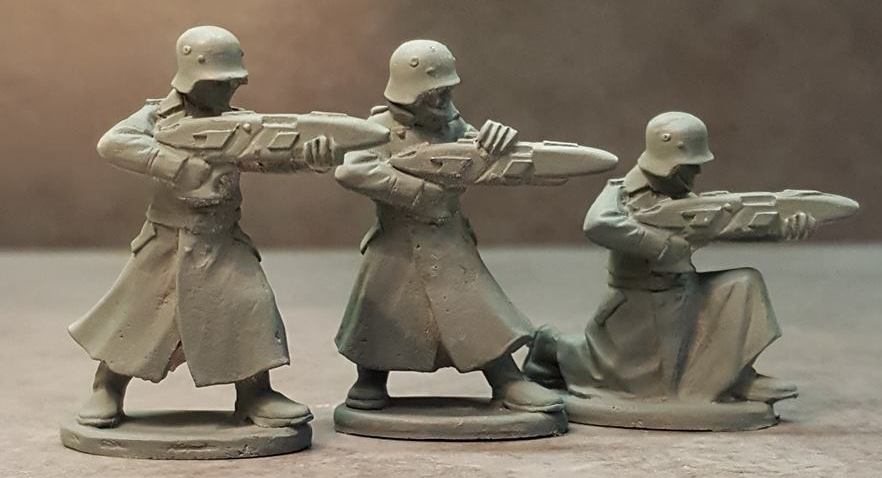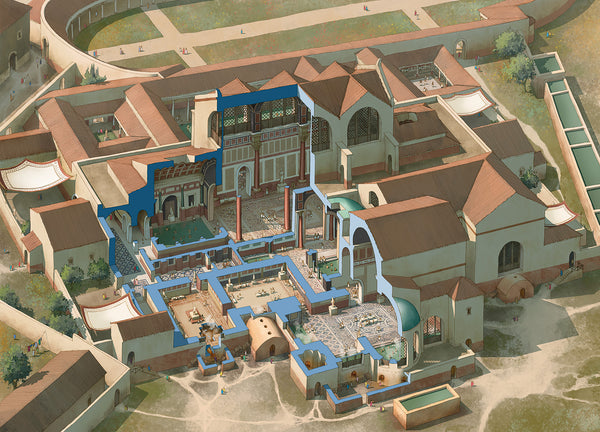Savage Core
Savage Core

Author: Jobby and Steve Saler
Publisher: Lucid Eye Publications
Pages: 88-page softback
System: Initiative-based with D10
Price: £12
Review by Rossco Watkins
Savage Core is a game I’d been interested in ever since I’d first heard the concept bandied about. I don’t remember exactly when that was, but I have been loosely following progress ever since. I say “loosely” because following Savage Core’s progress has not always been easy! The game and its accompanying range of figures have moved homes a couple of times, making keeping track a little tricky. However, Lucid Eye Publications have addressed this with their own website where you can find the rules, the figures, and support for Savage Core, as well as other games and products from Lucid Eye Publications, all in one place.
The game is set in a “vast cavernous region located miles underground somewhere beneath the Atlantic Ocean, sometime in the 20th century”. As you can imagine, they don’t see much natural light down there, but the whole region is dimly lit by glowing plants and rocks; however, the brightest objects in the Savage Core are objects known as “Sunstones”. These give off a far greater light than anything else in the land and often possess other arcane properties. The inhabitants of the Savage Core battle over many resources, but none are as treasured as the Sunstone.

Cro Magnons, one of the many factions.
The rulebook provides details of the six factions that inhabit the Savage Core: the Atlanteans, displaced from the lost city of legend and now master slavers attempting to enforce obedience in the region; the Amazons, fleet-of-foot female warriors using exotic weaponry and led by the queen and her witch crones; the Neanderthals, not too quick, not too bright, but incredibly strong and brutal; the Cro-Magnons, brave but arrogant hunter-gatherers; the Jaguar tribe, jungle warriors who file their teeth into points and tell strange tales of aliens; and lastly, the Simians, a race of intelligent apes who are masters of cunning ambush warfare. In each faction there are just two different types: “bosses” and “bods”. This keeps things very simple – your boss is your leader and top warrior, and everyone else is, well, just a bod! I rather like this; there are plenty of games where each figure is an individual and there’s lots of tracking and using of special skills and abilities, and that can be fun, but sometimes it’s nice to just get on with the game!
Character stats for each figure are presented in a fashion we might normally expect but with slightly different names. A boss has five stats, a bod four – they’re not there to think!
- Moxie: A figure’s luck; affects initiation, ranged conflict, and ranged conflict evasion.
- Smarts: A boss’s intelligence; this will help him to initiate tricks.
- Tick: Represents a figures health; be careful, bods have a tick of just 1!
- Buff: The more buff you are, the more likely you are to do well in hand-to-hand combat.
- Guts: Represents determination; a boss will need to rely on their bods’ guts, particularly when it comes to pulling off certain tricks.
- Clip: This represents a figure’s base speed before adding D10.
The game’s initiative is random – players roll a d10 and then add their leader’s “moxie” to this result. Draws for initiative are settled by referring to which player’s boss has the highest base “moxie”. It is worth noting that winning this phase is not necessarily a good thing; going first means that a player will have to reveal his “tricks” (more on this later) earlier than his opponents, and initiative cannot be “passed”. Also in this phase, should any two players roll the same result on the dice, a bonus phase called “double trouble” is initiated. “Double trouble” is a set of encounters designed to add an extra element of peril to your games. They include a range of people and beasts ,such as “lost Nazi treasure hunter”, “lost explorers”, “ravenous beasts” and (a rather more extreme example) the “militant T-Rex”. There are also more geological examples such as seismic shifts, magma overflow, or the more worrying, mind-altering “amber haze”. And there are also objects that may crop up, such as a chunk of the highly prized “sunstone” or the “lost explorer’s compass”. The rules state that players should agree beforehand which “double trouble” encounters they will use should the phase be triggered, and although I see the sense in this (I accept that not everyone will have a T-Rex model just “knocking about”), I personally feel that this would benefit by being randomly selected. I also rather liked that the game has no specific historical era attached to it, and although I quite like the “lost Nazi treasure hunter” I did feel that bringing this character into play did somewhat “narrow it down” in any game in which he appeared.

Amazons!
The second standard phase of the turn is the “tricky customer” phase. This is the phase (rather unsurprisingly) in which the previously mentioned “tricks” come into play. At the beginning of a turn, a player declares whether they are being a “tricky customer” this turn. There are three types of trick: “mob scene”, “relics”, and “hero surge”. Although there are only three types, each faction has its own variation of those types. To implement tricks, players must generally pass certain requirements; should they fail to implement their trick they will be “trickless” for that turn. However, this does not disqualify the same trick from being used in a subsequent turn.
Turns three, four, and five are what we might perhaps call more traditional aspects of a phase: those of movement, combat (here, conflict), and results. Movement should be considered carefully – a figure moves its ‘clip’ value + D10, meaning that figures could become very strung out, leaving members of your band somewhat exposed.

Evil Corelocks...
Conflict, both close and ranged, are decided very simply. To enter ranged conflict, figures must be within eight inches of each other, keeping things VERY close! Or in the case of close conflict, they must be in base-to-base contact. Ranged conflict hits are decided by combining the attacker’s “moxie” and a D10 die roll, and close conflict hits by combining the attacker’s “buff” with a D10 die roll. It may be worth employing the use of markers in this phase – one colour for ranged, another for close. I’m not normally overly keen on using tokens or markers on the table but here I felt it really helped with “bookkeeping”; having a visual guide to who has received hits will definitely be helpful in the conflict results phase. The conflict results phase could not be simpler: if a figure has a hit marker, simply roll a D10 on the appropriate table and this will give you the result of the hit. Sometimes you’ll walk away; sometimes, not so much!
The book contains five scenarios; these scenarios are perhaps a little more “loose” than scenarios given in other rulesets. Rather than give specific maps or objectives as such, Savage Core gives players added winning conditions for their games. In the first scenario, ”Rumble in the jungle”, for instance, the “double trouble” phase is activated EVERY turn, whilst you play your normal game, whereas the “Don’t look back” scenario places a sunstone in the middle of the table that only bods may interact with; you must get it to your own table edge to win. The scenarios are there to add flavour to your game rather than dictate it, and again, I really liked this.

Space Nazis!
I enjoyed this game massively; both myself and my son Raif found it very easy to get to grips with. By the time we were on our second game, play was fast and smooth and we found ourselves not having to go much beyond the quick reference tables at all by game three. The real beauty of Savage Core is the unique background and world in which it is set; it is a great idea very well executed. Added to that, it has a growing range of stunning figures; I am particularly fond of the Cro-Magnons and the new “Age of Ice Amazons”. You have a fun game with a great background and ethos, and a range of really lovely figures to go with it – what’s not to like? Well, there’s always something not to like (I can hear you all groaning – stop it!) I’m not massively keen on the book itself as a “thing”. Inside the book it looks great; the pages all look old and cool with blood splatters on them, the tables are nice and easy to use, and the photos of the figures are fantastic, painted by the super-talented Andres Amian. But the format of the book left me somewhat confused. It’s a paperback and it’s very small (A5 in fact); I felt that for something that could be a flagship ruleset for a company like Lucid Eye Productions it perhaps warranted something a little more substantial, to make the book itself as desirable an item as its accompanying figures. But that is a “first world” gaming moan! Pick up Savage Core, it’s a lot of fun.

